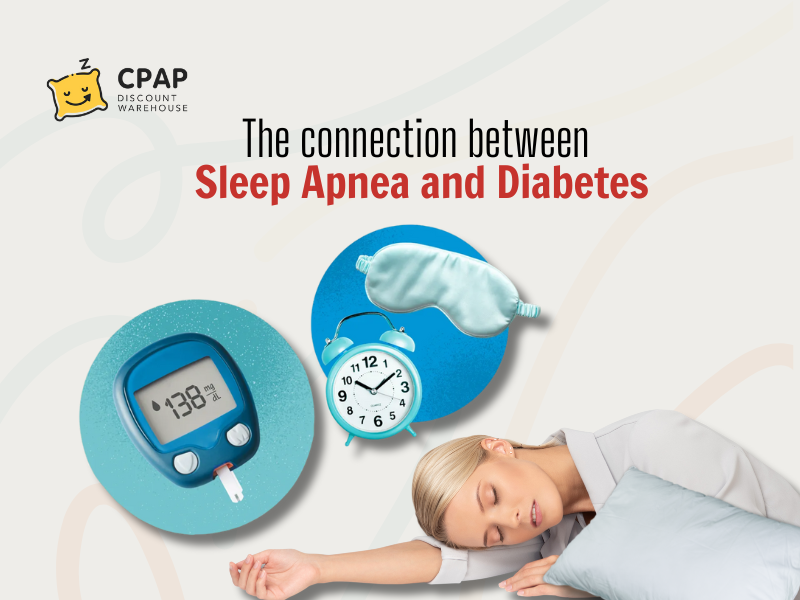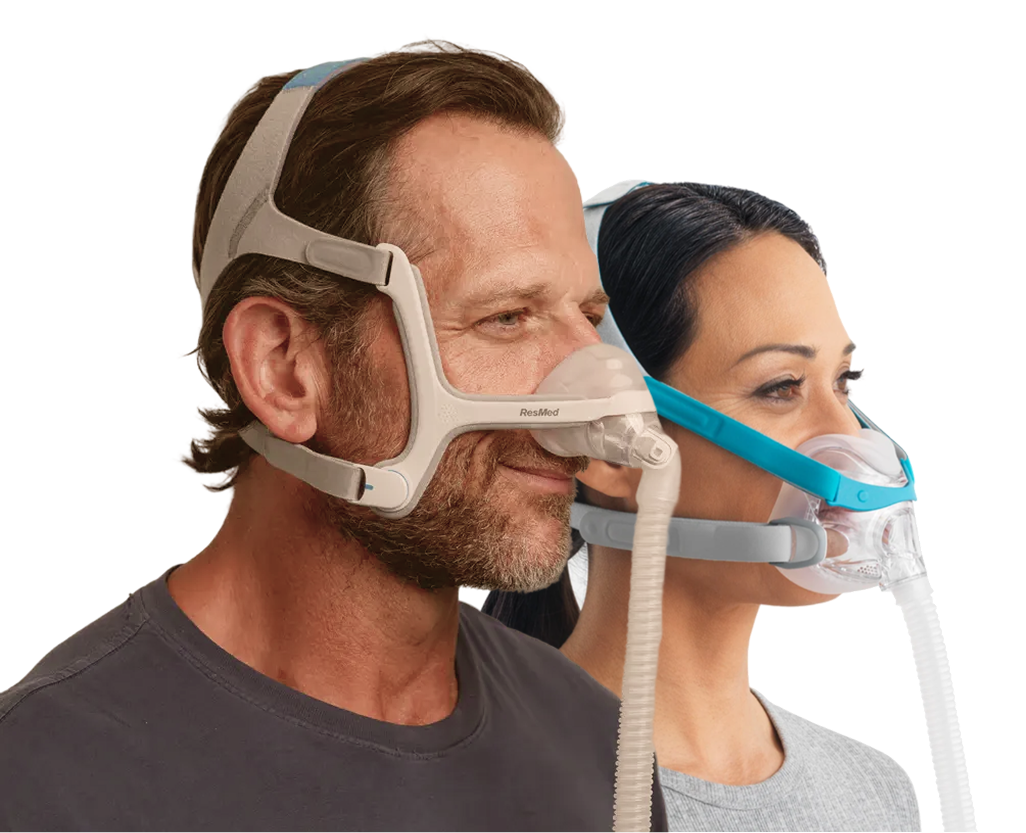Sleep apnea and diabetes connection is an important health topic for it affects millions of people around the world. Sleep apnea and diabetes are chronic health conditions that sustain a heavy burden of restrictions by themselves. Yet they very often coexist, multiply the risks, and complications. With particular attention to the increasing incidence of type 2 diabetes and OSA, understanding their interrelationship becomes of utmost importance. This article explores the relationship between the two disorders and examines the measures that can be taken to manage the conditions.
Overview of sleep apnea
Sleep apnea is a serious sleep disorder characterized by repeated interruptions in breathing during sleep. These pauses can last from a few seconds to over a minute, disrupting restful sleep and lowering oxygen levels in the blood. Over time, untreated sleep apnea can lead to significant health problems, including heart disease, high blood pressure, and diabetes.
There are mainly three types of sleep apnea:
-
The more common form called Obstructive Sleep Apnea occurs when the muscles in the wall of the throat relax more than normal with sleep, and the airway in the throat gets partially or completely blocked. This obstruction may block the flow of air into the lungs, causing very loud snoring, gasping, or choking.
-
Central sleep apnea is a rarer type that occurs when the brain stops functioning and fails to send appropriate signals to the muscles that control breathing. Hence, in this type, unlike OSA, it is a neurological matter rather than a physical blockage.
-
Hybrid sleep apnea constitutes a mixture of obstructive and central types, wherein patients exhibit manifestations of both disorders.
The common symptoms of sleep apnea include loud, chronic snoring, frequent awakenings during the night, gasping or choking for air, daytime sleepiness, morning headaches, and difficulty concentrating during the day. Factors predisposing individuals to the development of sleep apnea include obesity, a large neck circumference, smoking, alcohol consumption, and a family history of the condition.

Overview of Diabetes
Diabetes is a chronic condition that affects how the body regulates blood sugar, or glucose. The two main types are Type 1 diabetes and Type 2 diabetes, each with distinct causes and effects on the body.
-
Type 1 diabetes is an autoimmune disease where the immune system mistakenly attacks the insulin-producing cells in the pancreas. This results in little or no insulin production. People with Type 1 diabetes need daily insulin injections to manage their blood sugar levels. It typically develops in childhood or adolescence but can occur at any age.
-
Type 2 diabetes is far more common and is often linked to lifestyle factors such as poor diet, lack of physical activity, and obesity. In this type, the body either resists the effects of insulin or does not produce enough insulin to maintain normal glucose levels. This leads to high blood sugar levels and can cause serious health problems if left untreated.
Common symptoms of diabetes include frequent urination, increased thirst, unexplained weight loss, fatigue, and blurry vision. These symptoms arise because the body cannot properly use glucose for energy.
The metabolic impacts of diabetes are serious. Elevated blood sugar over time can damage blood vessels, nerves, and organs like the heart and kidneys. Managing diabetes involves controlling blood sugar through medication, diet, exercise, and lifestyle changes.
In Australia, about 1.3 million people live with diabetes, with Type 2 diabetes accounting for 85 to 90 percent of cases. Many individuals remain undiagnosed due to mild or absent symptoms early in the disease.
Understanding the prevalence and impacts of diabetes is critical, especially as it often coexists with other conditions such as sleep apnea and diabetes connection, which further complicates health outcomes.

>>> Sleep Apnea BMI Chart: The Link Between BMI and Sleep Apnea Risk
The Sleep Apnea and Diabetes Connection
Sleep apnea and diabetes are closely linked health conditions that often occur together, with each potentially worsening the other. Studies show that patients with OSA tend to have higher blood sugar levels and increased insulin resistance, key factors leading to Type 2 diabetes.
How Does Sleep Apnea Affect Blood Sugar Levels?
During sleep apnea episodes, interrupted breathing causes hypoxemia (low oxygen levels) and triggers increased sympathetic nervous system activity. This stress response disrupts glucose metabolism by promoting glycogen breakdown and gluconeogenesis, which raise blood sugar. Repeated oxygen deprivation and nervous system changes impair the body's ability to control blood glucose, increasing the risk of impaired glucose tolerance and insulin resistance.
Type 2 Diabetes and Sleep Apnea
Although Type 2 diabetes does not directly cause sleep apnea, there is a strong, bidirectional relationship. The prevalence of sleep apnea among people with Type 2 diabetes especially those who are obese is very high. For instance, the Sleep AHEAD study reported that 86% of obese diabetic patients also had obstructive sleep apnea.
Conversely, untreated sleep apnea worsens blood sugar control and increases insulin resistance, promoting the development and progression of Type 2 diabetes. Large-scale studies like the Sleep Heart Health Study confirm that moderate to severe sleep apnea (measured by AHI) increases the risk of abnormal glucose tolerance. Additionally, sleep fragmentation caused by apnea contributes to the worsening of diabetes through increased inflammation and hormonal imbalances.
Coexisting sleep apnea and Type 2 diabetes raise the risk of serious health problems such as cardiovascular disease, hypertension, and stroke. Managing both conditions together improves long-term health outcomes and quality of life.
Obstructive Sleep Apnea and Type 1 Diabetes
Although less frequent, sleep apnea in Type 1 diabetes patients can occur, especially due to complications like autonomic neuropathy, which affect breathing regulation during sleep.
In Type 1 diabetes, the link to sleep apnea is more neurological than metabolic. Nerve damage and blood sugar fluctuations contribute to breathing irregularities, increasing the risk of both central sleep apnea and obstructive sleep apnea symptoms.

Diagnosis and Screening
Early diagnosis is crucial, especially for individuals who have been diagnosed with diabetes or are showing sleep apnea symptoms.
When to Get Screened for Sleep Apnea If You Have Diabetes
You should get screened if you:
-
Frequently wake up tired
-
Experience loud snoring or gasping
-
Have high blood pressure
-
Struggle to control blood sugar despite medication
Tools Used in Clinics
-
Polysomnography (PSG): An overnight sleep study conducted in a sleep lab.
-
Home Sleep Apnea Tests (HSAT): Convenient, less expensive, and often sufficient for diagnosis in patients with clear symptoms.
>>> What is a Sleep study? 5 Steps to Get Tested for Sleep Apnea
Role of Endocrinologists and Sleep Physicians in Co-management
Endocrinologists should screen diabetic patients for sleep apnea, especially if they are obese or have uncontrolled blood sugar. Meanwhile, sleep physicians should consider diabetes risk in patients with moderate to severe OSA. Collaborative care results in better outcomes and reduced long-term complications.
Treatment Options for Sleep Apnea and Diabetes
Effective management involves addressing both conditions simultaneously.
CPAP Therapy and Its Effect on Insulin Sensitivity
CPAP therapy is the gold standard for treating OSA. Several studies, including the PMC article, show that CPAP improves insulin sensitivity and reduces HbA1c levels in diabetic patients.
At CPAP Discount, patients can find affordable CPAP machines and accessories from top brands, helping improve not just sleep quality but also overall metabolic health.
Weight Management and Lifestyle Changes
Weight loss is a powerful intervention. Reducing body fat improves both airway function and insulin sensitivity. Recommended approaches:
-
Mediterranean diet
-
Intermittent fasting (with medical guidance)
-
Regular cardiovascular and resistance exercise
Medication Considerations
-
Metformin: May cause mild gastrointestinal sleep disturbances, but is effective in improving insulin resistance.
-
Sleep medications: Should be used cautiously as some can relax airway muscles and worsen OSA.
Diet and Exercise as Dual-Impact Tools
A diet high in fiber, low in added sugars, and rich in anti-inflammatory foods benefits both conditions. Exercise not only helps with weight control but also improves sleep architecture and reduces episodes of apnea.
Conclusion
Sleep apnea and diabetes are closely connected because they share many risk factors and physiological pathways. When left untreated, the combined impact of both conditions can significantly increase the risk of serious health complications. Early screening and personalized management can make all the difference. Visit CPAP Discount Warehouse today for trusted sleep solutions and expert guidance.

FAQs
How are sleep apnea and type 2 diabetes connected?
They share common risk factors such as obesity and poor metabolic health. Sleep apnea disrupts sleep and oxygen balance, leading to hormonal changes that worsen insulin resistance.
Can treating sleep apnea improve diabetes?
Yes. Studies show that CPAP therapy can improve blood glucose control and reduce HbA1c levels in patients with type 2 diabetes.
Is diabetes caused by sleep apnea?
Sleep apnea doesn’t directly cause diabetes, but it increases the risk of developing insulin resistance and type 2 diabetes over time.
Can CPAP reverse diabetes?
CPAP can improve insulin sensitivity and help manage diabetes more effectively, but it cannot reverse the disease entirely. It works best when combined with weight loss, diet, and medication as needed.






